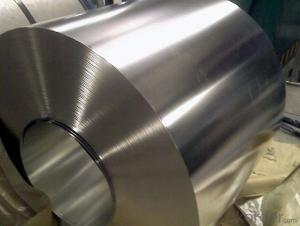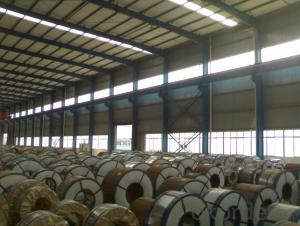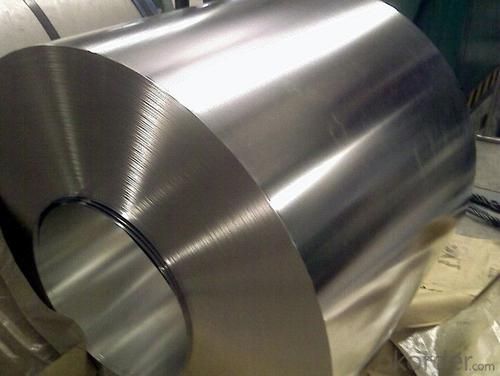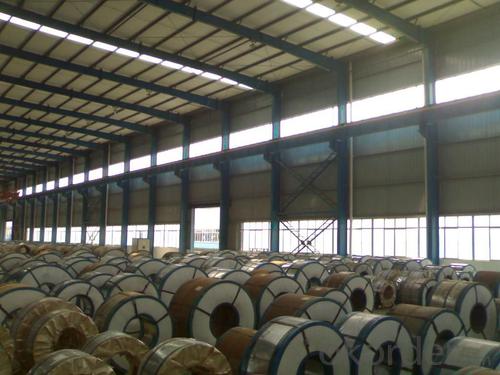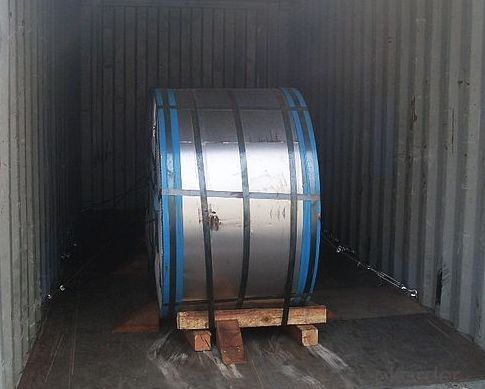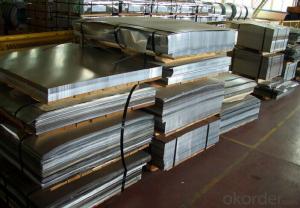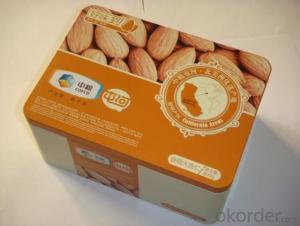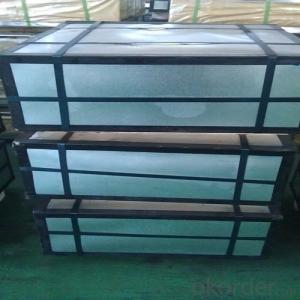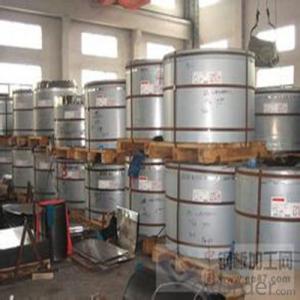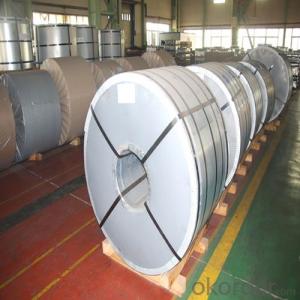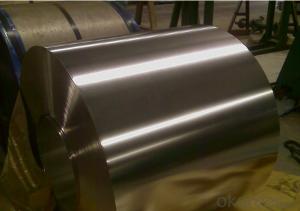Electrolytic Tinplate Coil for Foods and Chemical Packaging
- Loading Port:
- Tianjin
- Payment Terms:
- TT OR LC
- Min Order Qty:
- 25 m.t
- Supply Capability:
- 7000 m.t/month
OKorder Service Pledge
OKorder Financial Service
You Might Also Like
1.Structure of Electrolytic Tinplate Coil for Foods and Chemical Packaging Description
Electrolytic Tin Plate Coils and Sheets for Foods Metal Packaging, is one thin steel sheet with a coating of tin applied by electrolytic deposition. Tinplate made by this process is essentially a sandwich in which the central core is strip steel. This core is cleaned in a pickling solution and then fed through tanks containing electrolyte, where tin is deposited on both sides. As the strip passes between high-frequency electric induction coils, it is heated so that the tin coating melts and flows to form a lustrous coat.
2.Main Features of the Electrolytic Tinplate Coil for Foods and Chemical Packaging
Appearance – Electrolytic Tin Plate is characterized by its beautiful metallic luster. Products with various kinds of surface roughness are produced by selecting the surface finish of the substrate steel sheet.
Paintability and printability – Electrolytic Tin Plates have excellent paintability and printability. Printing is beautifully finished using various lacquers and inks.
Formability and strength – Electrolytic Tin Plates have got very good formability and strength. By selecting a proper temper grade, appropriate formability is obtained for different applications as well as the required strength after forming.
Corrosion resistance – Tinplate has got good corrosion resistance. By selecting a proper coating weight, appropriate corrosion resistance is obtained against container contents. Coated items should meet 24 hour 5 % salt spray requirement.
Solderability and weldability – Electrolytic Tin Plates can be joined both by soldering or welding. These properties of tinplate are used for making various types of cans.
Hygienic – Tin coating provides good and non toxic barrier properties to protect food products from impurities, bacteria, moisture, light and odours.
Safe – Tinplate being low weight and high strength makes food cans easy to ship and transport.
Eco friendly – Tinplate offers 100 % recyclability.
Tin is not good for low temperature applications since it changes structure and loses adhesion when exposed to temperatures below – 40 deg C.
3.Electrolytic Tinplate Coil for Foods and Chemical Packaging Images


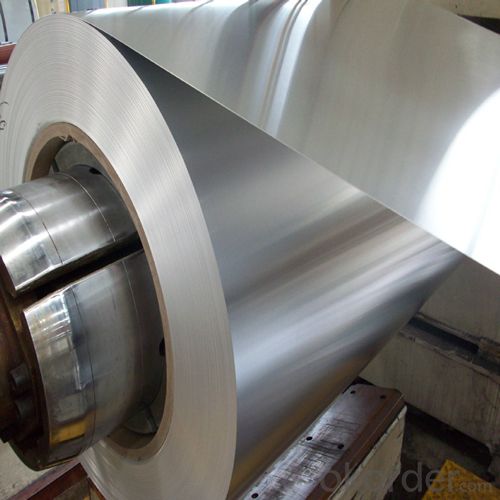
4.Electrolytic Tin Plate Coils and Sheets for Foods Metal Packaging Specification
Standard | ISO 11949 -1995, GB/T2520-2000,JIS G3303,ASTM A623, BS EN 10202
|
Material | MR,SPCC |
Thickness | 0.15mm - 0.50mm |
Width | 600mm -1150mm |
Temper | T1-T5 |
Annealing | BA & CA |
Coil Inner Diameter | 508mm |
Weight | 6-10 tons/coil 1~1.7 tons/sheets bundle |
Passivation | 311 |
Oil | DOS |
Surface | Finish,bright,stone,matte,silver |
5.FAQ of Electrolytic Tinplate Coil for Foods and Chemical Packaging
-How to place .an order or contact you ?
Please send us Email. we will give you a quick response in seconds .
- How is your quality ?
All our quality is prime even the secondary quality . We have many years experience
In this field with serious quality control standard . Advanced equipment, We welcome your visit to our factory .
- Q: What are the main applications of tinplate in the gardening industry?
- Tinplate is commonly used in the gardening industry for various applications such as plant pots, seed trays, watering cans, and garden tools. The use of tinplate ensures durability, corrosion resistance, and ease of maintenance, making it an ideal choice for these gardening essentials. Additionally, tinplate can also be utilized for packaging purposes, such as cans for storing fertilizers, pesticides, and other gardening products.
- Q: How does tinplate withstand corrosion?
- Tinplate withstands corrosion due to the thin layer of tin that is electroplated onto the surface of the steel. Tin is highly resistant to corrosion, providing a protective barrier that prevents the steel underneath from being exposed to moisture and oxygen, which are the main causes of corrosion.
- Q: Can tinplate be used for promotional items?
- Yes, tinplate can definitely be used for promotional items. Its versatility, durability, and customizable design options make it a popular choice for creating unique and eye-catching promotional products such as tin boxes, tin signs, tin coasters, and more. Tinplate's ability to be printed with high-quality graphics and logos also allows businesses to effectively showcase their brand and attract attention to their promotional campaigns.
- Q: Can tinplate be used for electrical appliances?
- Yes, tinplate can be used for electrical appliances. Tinplate is a thin steel coated with a layer of tin, making it corrosion-resistant and suitable for various applications, including electrical appliances. The tin coating provides an excellent barrier against moisture and oxidation, making it a reliable material for electrical components and enclosures.
- Q: Can tinplate be used for packaging luxury goods?
- Yes, tinplate can be used for packaging luxury goods. Tinplate is a versatile material that offers both functionality and aesthetic appeal, making it suitable for high-end products. Its durability, resistance to corrosion, and ability to maintain product freshness and quality make it an excellent choice for luxury packaging. Additionally, tinplate can be easily decorated and customized with high-quality printing and embossing techniques to enhance the visual appeal and create a premium look for luxury goods.
- Q: What are the main factors influencing the consumer preferences for tinplate packaging?
- The main factors influencing consumer preferences for tinplate packaging include its recyclability and sustainability, durability and protective properties, aesthetic appeal and branding opportunities, as well as its ability to preserve product quality and freshness.
- Q: What are the different methods of storing tinplate packaging?
- There are several different methods of storing tinplate packaging, including stacking, shelving, hanging, palletizing, or using storage racks. The choice of method depends on factors such as the quantity of packaging, available space, ease of access, and the specific requirements of the products being stored.
- Q: How is tinplate coated for pharmaceutical packaging?
- Tinplate is commonly coated for pharmaceutical packaging through a process called electrolytic tin coating.
- Q: How does tinplate perform in terms of aroma and flavor preservation?
- Tinplate performs well in terms of aroma and flavor preservation. The tin coating on the steel substrate provides an effective barrier against oxygen, moisture, and light, which helps to preserve the freshness and quality of food or beverages inside the packaging. This ensures that the aroma and flavor of the product are protected and maintained over time.
- Q: Can tinplate be used for signage and displays?
- Yes, tinplate can be used for signage and displays. Tinplate is a versatile material that is strong, durable, and resistant to corrosion, making it suitable for outdoor and indoor applications. Additionally, it can be easily formed into various shapes and sizes, allowing for creative and visually appealing signage and display designs.
Send your message to us
Electrolytic Tinplate Coil for Foods and Chemical Packaging
- Loading Port:
- Tianjin
- Payment Terms:
- TT OR LC
- Min Order Qty:
- 25 m.t
- Supply Capability:
- 7000 m.t/month
OKorder Service Pledge
OKorder Financial Service
Similar products
Hot products
Hot Searches
Related keywords
